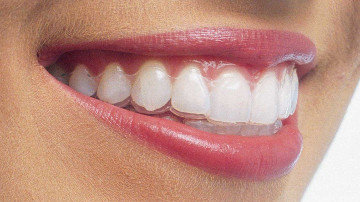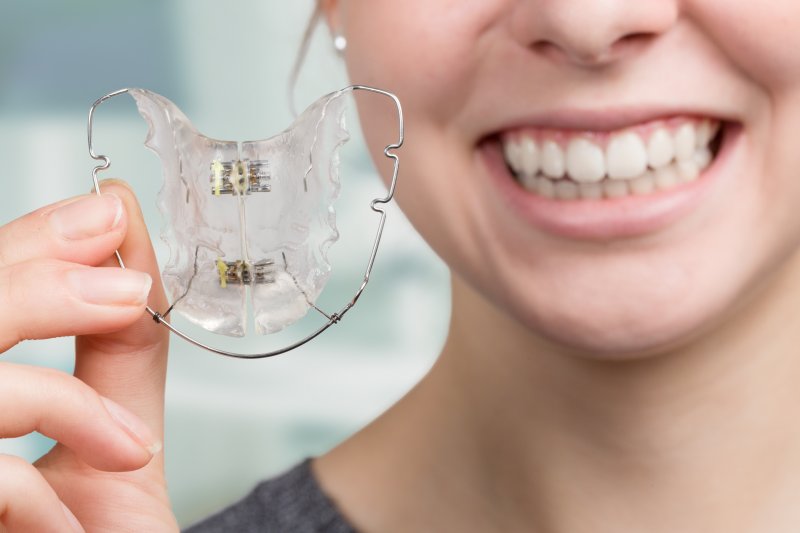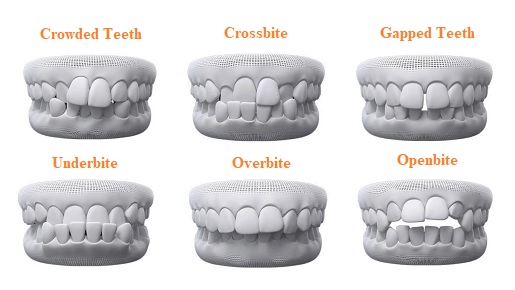Top Factors to Choose Invisalign Over Other Orthodontic Treatments
Top Factors to Choose Invisalign Over Other Orthodontic Treatments
Blog Article
Invisalign vs. Standard Braces: Which Alternative Is Right for You?
When taking into consideration orthodontic therapy, the choice between Invisalign and conventional dental braces provides numerous crucial variables that merit careful examination. Invisalign supplies a discreet choice with detachable aligners, while standard braces offer a much more noticeable yet effective option for extreme misalignment. Each alternative incorporates unique advantages and disadvantages related to aesthetic appeals, comfort, treatment duration, and cost. Comprehending these nuances is vital for making an educated decision that straightens with your individual choices and way of life. The question remains: which choice will ideal meet your orthodontic requirements and expectations?
Introduction of Therapy Alternatives

In contrast, conventional braces contain metal braces and cables that are bound to the teeth. This method applies continual stress in time to accomplish alignment. While reliable for complicated orthodontic issues, standard dental braces need normal visits for changes and can present difficulties in keeping oral health because of the difficulty of cleansing about brackets and cables.
Both alternatives have their merits, and the selection often depends upon details dental conditions, way of life choices, and patient compliance. Ultimately, consulting an orthodontic professional is critical for identifying one of the most appropriate therapy plan tailored to individual demands. Recognizing the nuances of each option can dramatically influence the general success of orthodontic therapy.
Visual Considerations
A considerable element affecting the option between Invisalign and conventional braces is the aesthetic allure each therapy provides. Invisalign aligners are crafted from clear plastic, making them virtually unseen when worn. This discreet look is particularly interesting teenagers and adults who might really feel self-conscious concerning their orthodontic therapy. The capability to preserve an all-natural smile throughout the positioning procedure can substantially enhance the individual's self-confidence in social and expert setups.
On the other hand, traditional dental braces include metal brackets and cables, which can be much more visible. While advancements in orthodontic innovation have led to the growth of smaller sized brackets and tinted elastics, typical braces still preserve a more conspicuous profile. For some individuals, the presence of dental braces might hinder them from looking for needed treatment.
Ultimately, the option in between Invisalign and standard dental braces might pivot on individual preferences pertaining to looks. People who focus on discretion often lean toward Invisalign, while those that are less concerned concerning exposure may select traditional braces. Understanding the visual effects of each option is important for making an educated decision that lines up with one's way of life and preferences.
Convenience and Convenience

In regards to ease, Invisalign aligners are removable, enabling clients to appreciate their favorite foods without constraint and maintain ideal oral health. Cleaning and flossing are simplified, as the aligners can be gotten during these regimens, whereas typical braces require careful maneuvering around cables and braces.
In comparison, conventional dental braces demand regular modifications, making them less hassle-free for those with Related Site busy schedules. On the whole, the convenience and ease of Invisalign make it an enticing option for several people looking for orthodontic treatment.
Therapy Period and Efficiency
While both Invisalign and traditional braces are reliable in dealing with dental misalignments, the period of therapy can differ dramatically in between both choices. Commonly, Invisalign treatment can take anywhere from 12 to 18 months, depending on the complexity of the situation. The clear aligners function by slowly shifting teeth right into their desired positions, and routine follow-ups with an orthodontist help ensure progress remains on course.
On the other hand, typical dental braces usually require a longer dedication, usually ranging from 18 months to 3 years. This is due to their set nature and using cables and braces, which can be more efficient for intricate situations and extreme misalignments (Invisalign). The treatment performance of conventional dental braces is well-documented, as they enable exact modifications and higher control over tooth activity
Eventually, the selection in between Invisalign and conventional dental braces might depend upon both the anticipated therapy period and the certain dental problems available. Consulting with an orthodontist is critical, as they can offer customized referrals based on private requirements, ensuring the picked method aligns with preferred end results and timeframes.
Cost Comparison and Insurance Policy Alternatives
Expense plays a significant duty in the decision-making procedure for individuals taking go to these guys into consideration orthodontic treatment, whether choosing Invisalign or traditional braces. Usually, the expense of Invisalign ranges from $3,000 to $8,000, while traditional dental braces typically set you back in between $2,000 and $6,000. Variables affecting these costs include the intricacy of the case, the period of treatment, and geographical area.
Insurance policy protection can substantially impact out-of-pocket costs. Several dental insurance plans give partial protection for orthodontic therapies, however the specifics can vary commonly. It is essential for clients to review their insurance plan to determine the level of protection for either choice. Normally, traditional dental braces may be extra regularly covered by insurance coverage strategies compared to Invisalign, which some insurance firms categorize as a cosmetic procedure.
In addition, a number of orthodontic practices supply flexible layaway plan, making both therapy choices a lot more accessible. Patients need to ask about potential financing alternatives and price cuts for upfront payments. Reviewing the overall cost, including insurance benefits and payment plans, is essential for making an educated choice that straightens with both visual preferences and budget plan factors to consider.

Final Thought
In summary, the selection in between Invisalign and traditional dental braces depends upon several aspects, consisting of visual choices, convenience, therapy duration, and expense. Invisalign supplies a very discreet, removable alternative that helps with oral hygiene and dietary versatility, while conventional braces may be better for complicated oral issues and typically come at a reduced price factor. Ultimately, examination with an orthodontist is vital to examine private scenarios and establish the most ideal therapy choice for accomplishing optimum oral placement.
When taking into consideration orthodontic therapy, the choice between Invisalign and typical dental braces provides numerous essential variables that merit cautious assessment.Contrasting Invisalign and standard dental braces reveals unique treatment options for orthodontic modification.While both Invisalign and standard braces are efficient in correcting oral imbalances, the period of treatment can differ substantially in between the two choices.Price plays a significant duty in the decision-making process for individuals thinking about orthodontic therapy, whether deciding for Invisalign or typical braces.In recap, the selection in between Invisalign and conventional dental braces pivots on several variables, consisting of aesthetic preferences, convenience, therapy duration, and price.
Report this page